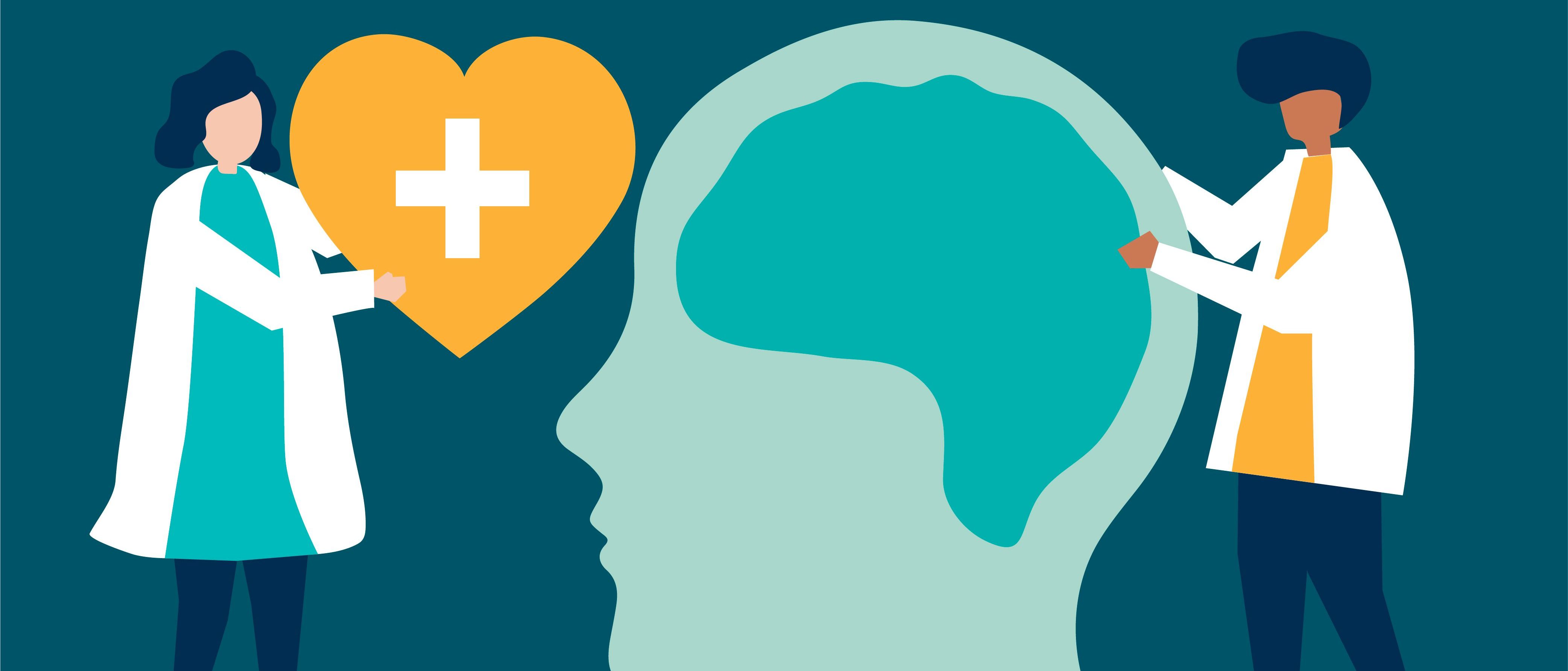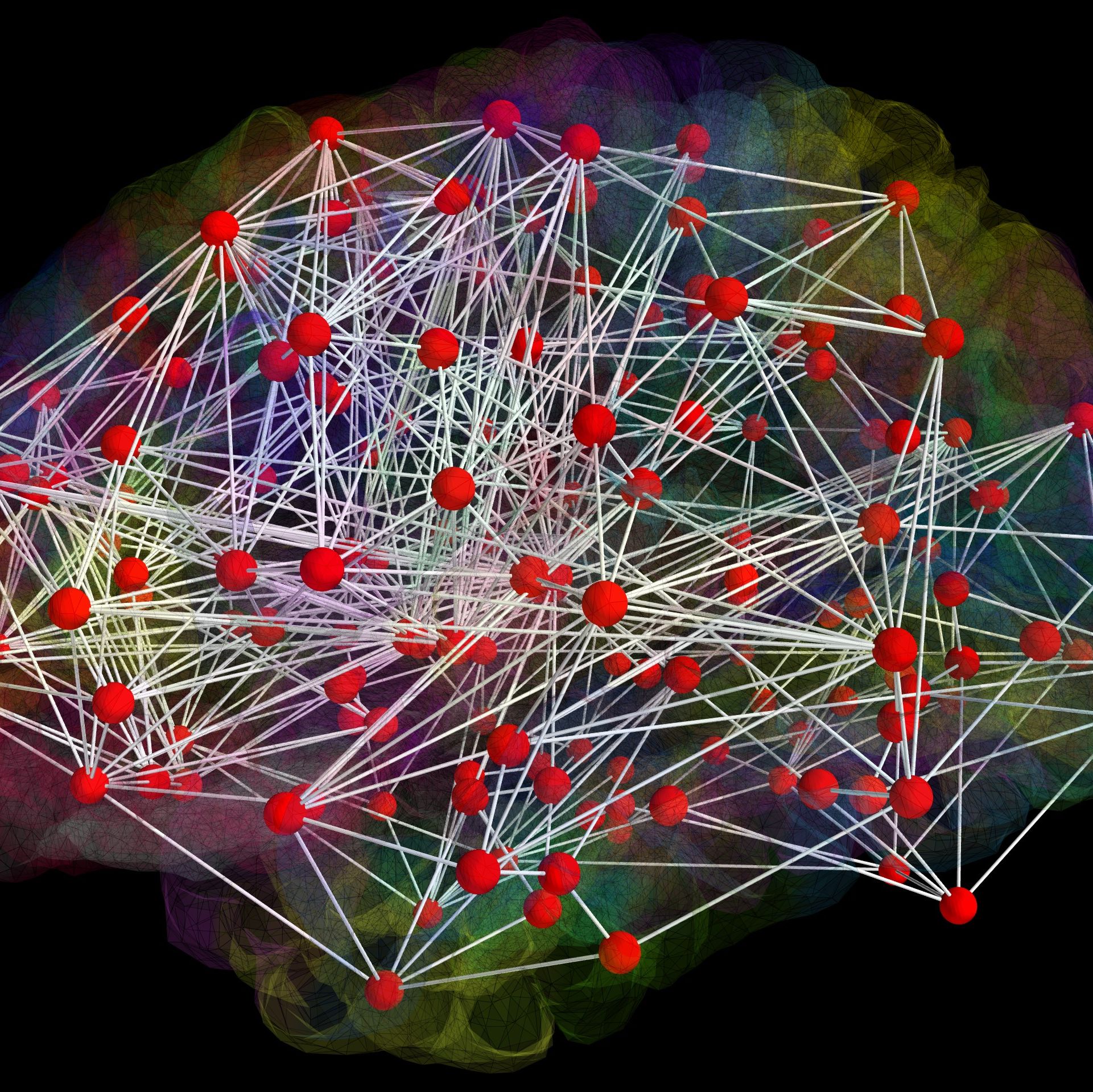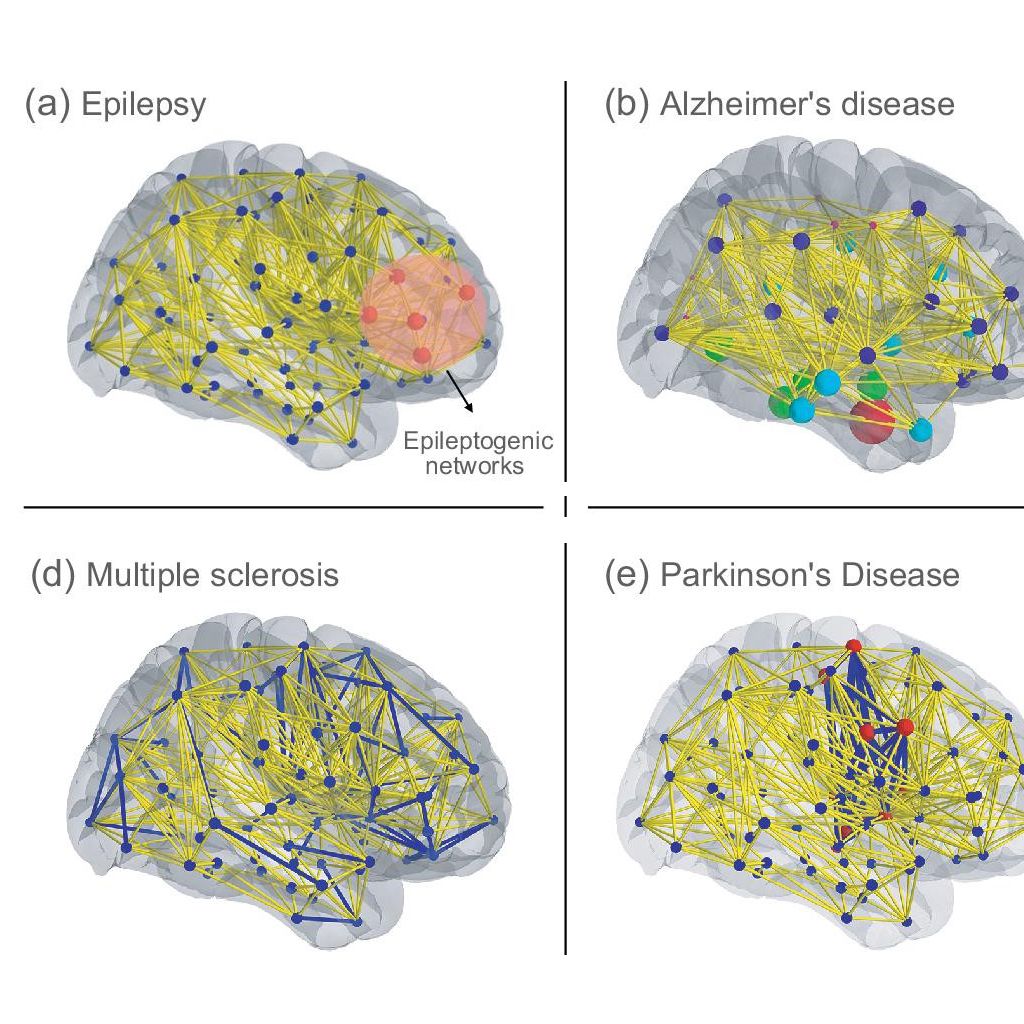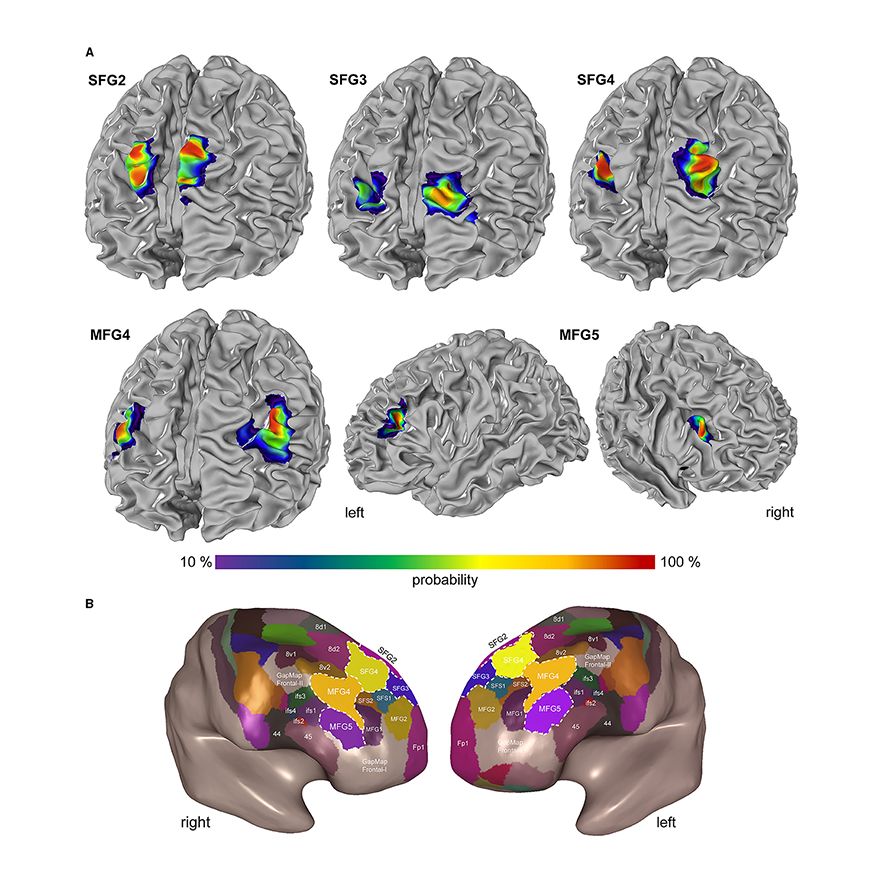
One step closer to a new European Brain Initiative

On 3 May 2022, the day when the European Commission launched the European Health Data Space (EHDS), one of the central building blocks of a strong European Health Union, EBRAINS, together with the OECD, held a second Round Table discussion to further explore new solutions in brain health and brain research and pave the way to a new European Brain Initiative. The online meeting gathered an extensive panel of experts, including neuroscientists, data scientists, clinicians, influencers, and policymakers. The importance of greater accessibility of brain health data for research and clinical purposes was at the core of the discussion. Below, we are highlighting the main points and observations raised during the event.
The Challenge: Towards Step Change in Accessibility of Brain Health Data
The health sector is lagging behind compared to other areas of the economy when it comes to leveraging the opportunities presented by data and digitalisation. Although the sector is data-rich, it is also information poor. Using data to deliver digital transformation in health is underexplored. A common European approach for the use and re-use of health data has the potential to advance breakthroughs in science and medicine.
Although some technical aspects remain unresolved, the most critical common impediment to using and re-using personal health data is the fragmentation of existing data sources. Another critical challenge is the lack of interoperability and the absence of a common legislative framework that facilitates sharing and re-use across borders. “The launch of the European Health Data Space (EHDS) is a great opportunity to accelerate a digital transformation process in health care. This transformation is long overdue.”, said one of the speakers. A genuine interoperability, enabling the sharing of electronic health records, could lead to substantial gains for patients and the health systems.
Given the different ways the GDPR framework is interpreted in the Member States, in particular with regard to exceptions concerning use of data for research purposes, cross-border initiatives are not sufficiently incentivized. There are high expectations that this problem will be addressed by the new EHDS legislation that aims to create a robust legal framework for using health data for research, innovation, public health, policymaking, and regulatory purposes.
One speaker underlined the global aspects of data sharing and the need for a strong international regulatory environment that does not leave the middle and low-income countries behind. Participants agreed that such a framework is essential for systemic reasons. It improves current health systems and infrastructure and promotes equality in healthcare access. But it is also relevant from a diversity standpoint, by ensuring that the available data sets represent the population in the broadest way possible, leading to a more positive impact on the quality of research outcomes.
Lack of robust international standards for describing data and making it comparable was pointed out, often leading to the duplication of efforts and making synergetic collaborations difficult: “Often researchers do not know what data other researchers have gathered. Even if they are aware of the data, they probably cannot use it since the standards vary widely across borders and institutions in the same country.” Participants agreed that it is vital to highlight success stories and areas where data sharing and re-use have yielded noteworthy results, not only to motivate the scientific community, but to encourage policymakers to take appropriate action.
When talking specifically about Brain Health Data, participants cited a reproducibility crisis - even when data is standardised, data processing is not, and nor are results. It is essential to go from the beginning to the end – from acquisition to data processing. The objective is to facilitate the treatment and analysis of the data. Still, the problem lies in the usage and sharing of personal data, or what can be classified as personal data if we talk about brain imaging. It was noted that when data is fully anonymised, it risks becoming less valuable. The data anonymisation process itself poses challenges. As algorithms get better, the harder it is to anonymise data.
Participants agreed that policy actions are needed to clarify some of the most restrictive interpretations of GDPR. Researchers should be able to share data within the EU space, even if it is not anonymised, if it serves the interests of a greater good like public health.
The Solution: Policy and Funding for Actionable Data
The EHDS was designed to help the EU achieve a quantum leap in how healthcare is provided to people across Europe. It aims to empower people to control and utilise their health data in their home country or in other Member States. It wants to foster a single market for digital health services and products. And it looks to offer a consistent, trustworthy, and efficient framework to use health data for research, innovation, policy-making and regulatory activities while ensuring full compliance with the EU's data protection standards.
The EHDS is one of the ten dataspaces announced by the European Commission in 2020, along with a five-year action plan to make Europe a truly digital economy. The first step is creating a governance framework through the Data Governance Act that should become applicable in the Member States in September 2022. It will create the digital structures needed for voluntary data sharing and secondary use of data. By making it a voluntary process, the hope is to build trust and transparentize the approach. Another issue the Data Governance Act will address is interoperability. “It is not sufficient to make data available in one data space; it’s important to make the best use of it across sectors.”, it was said.
Of the ten dataspaces that have been announced in the data strategy, the EHDS is the most advanced. The European Commission will not own these data spaces. Instead, dthey are designed to be very flexible structures. The data spaces mentioned in the data strategy are the ones that were deemed a priority. These data spaces will follow the principles of personal data protection as defined in the GDPR. Participants noted that GDPR should not stand in the way of making data sharable and usable.
Participants agreed that it would be helpful to have more information about how the EC sees the interplay of GDPR and the Data Governance Act / EHDS and again raised concerns about the hurdles the latter might impose. One participant noted that “there is a lot of uncertainty and scepticism when cooperating with other countries. The assumption is that current data transfer and processing mechanisms are inefficient even when dealing with FAIR data. We need clear guidelines, so as to know better what to expect and how to tackle the issue in the proposed framework.”
Another participant highlighted that whenever they have an issue with GDPR and request legal counselling, the interpretations are always very restrictive. It would be helpful for the European Commission to share good practices and cases that could be used as a reference when dealing with patient data and GDPR. Another participant referred to the disconnect between the policymakers and the people on the ground using the data, urging for more intense dialogue and alignment. All participants agreed that there’s currently a lot of complexity in the data sharing space, with different legislation proposals that make the landscape hard to predict and prepare for. Participants called for a policy primer that could clarify the current landscape and provide some clarification of what can be expected moving forward.
The topic of broader involvement from all stakeholders having an active interest in the future EHDS was widely discussed. Participants talked about the importance of having data management as a cornerstone in every research project, as data plays a decisive role in innovative breakthroughs. The importance of adequate data management is particularly relevant when discussing data reuse. More and more, researchers should be able to access external sources of data to strengthen their own research. They should also be encouraged to do so. That includes shaping the legislative framework to address the current hurdles and avoid silos. Therefore, the ambition is to build more reliable tools and methods supported by sustainable digital platforms and a collaboration framework across specialities and stakeholders for the long-term benefit of patients and healthcare systems.
Furthermore, participants flagged data quality and reproducibility issues, highlighting the current fragmentation of data sources, the lack of standardization, and the uncertainty around the secondary use of data. It was noted with interest that access and integration of heterogeneous health data for improved health care in disease areas of high unmet public is deemed a priority in the future calls and projects of the Innovative Health Initiative.
Participants asked the European Commission to provide a channel for the neuroscience and brain health community to expose its concerns and needs and openly discuss the expected changes in the legislative framework in the coming months.
The Action: Making Brain Health Data Accessible at Scale
Making brain health data accessible at scale will be a big challenge in the coming years. At the Round Table, participants were briefed about the example of the French Health Data Hub(HDH), a public structure created in 2019 to facilitate access to health data for public interest projects to improve the quality of care for patients. The HDH is currently coordinating a pilot submission, along with other European partners, including EBRAINS, to prepare the infrastructural aspects of EHDS implementation. The project aims to establish a series of cross-border use cases, exploring recommendations to increase interoperability and incentivise data reuse under the EHDS.
Subsequently, the participants received a very useful update on the contribution of the Alzheimer’s Disease Data Initiative (ADDI) to creating interoperability of data, generating the tools that make data discoverable and useful and bringing users together to share and disseminate their data and findings. The project works with existing platforms like the Dementia Platform in the UK and stakeholders from the pharmaceutical industry active in the newly established European Platform for Neurodegenerative Diseases (EPND). It was observed in the discussion that user engagement is a critical issue for providers with researchers often asking questions about the cost-benefit of interacting with platforms, underlining the need to constantly improve the value proposition of the latter. One proposed way to tackle these concerns is to develop tools that make the cost-benefit relationship entirely transparent for users. Users need to feel that the data they can find is readily available, usable, and of high quality when they come to the platform.
Participants agreed that lowering barriers of entry to data platforms and making existing tools more user-friendly would facilitate breakthroughs in biomarkers, hypothesis generation, and drug development.
The functionalities of the EBRAINS Medical Informatics Platform (MIP) were presented as well. The MIP is a federated data platform designed to help clinicians, clinical scientists, and clinical data scientists to adopt advanced analytics for diagnosis and research in the clinic. The platform is used in more than 30 hospitals and relies on a virtual database that seamlessly presents aggregated data from distributed sources. Users can explore harmonised medical data extracted from pre-processed neuroimaging, neurophysiological and medical records, and research cohort datasets without transferring original clinical data. Another EBRAINS tool is the HIP - a platform for state-of-the-art processing and international sharing of HUMAN intracerebral EEG data. Apart from making the data accessible, a big challenge is to provide researchers with the tools they can use for handling, processing, and analysing the data, and that is where the full potential of EBRAINS and other Research Infrastructures comes into play.
Looking at other tools available on EBRAINS, participants were also introduced to [The Virtual Brain] (https://ebrains.eu/service/the-virtual-brain/)(TVB) and the way this open-source platform for constructing and simulating personalised brain network models aids researchers in processing large cohort databases and using these results to develop potential medical treatments, therapies, or diagnostic procedures. The emerging solution in this area is also The Health Data Cloud (HDC), the foundation for which is provided by an existing GDPR-compliant and EBRAINS-interoperable Virtual Research Environment (VRE), based at the Charité University Hospital. The EBRAINS HDC will integrate diverse data sources from institutions and data sources across Europe. The goal is to streamline data models and make the various platforms interoperable. After an overview of these projects, it was shown that the degree of readiness of the infrastructure is high and quickly improving. Gaps, like the lack of facilities to test AI solutions in healthcare, need to be addressed, and this open the space for exciting developments in the years to come.
Conclusions
There is a sense of a paradigm shift in-the-making with regard to the accessibility of health data for research. The need for systemic solutions to tackle the complexity of the challenge is particularly strong. It is necessary to create a system that is resilient and can accommodate both the needs of researchers and clinicians, without forgetting other relevant stakeholders and industry.
Particular attention should be paid to interoperability and re-use of data. As legislative changes are ongoing, these aspects can already be addressed considering the status of the digital infrastructure in place to support them. There are many data sources across the different European countries. But often, researchers are not fully aware of them. “Striving to be complimentary and collaborative, is the way forward.”, argued one participant.
Finally, participants agreed that re-using and integrating readily available data should be a priority when addressing urgent health brain questions and argued that in the long term it will be essential to phenotype brain diseases within a new innovative digital data ecosystem. The future of medicine and care is a digital one, and it is necessary to bring researchers, clinicians, patients, policy makers and industry stakeholders to the table if we are to see it through.
“Making health data accessible and actionable is a prerequisite for scientific breakthroughs. With the EHDS legislation and emerging infrastructural support, we are on the cusp of a new chapter in extracting genuine value out of data in Europe. This should be a central focus of the new European Brain Initiative.”
CEO of EBRAINS and Director General of the Human Brain Project
News & events
All news & events- Science and technology17 Apr 2024

- Science and technology10 Apr 2024

- Science and technology03 Apr 2024

- Science and technology27 Mar 2024
